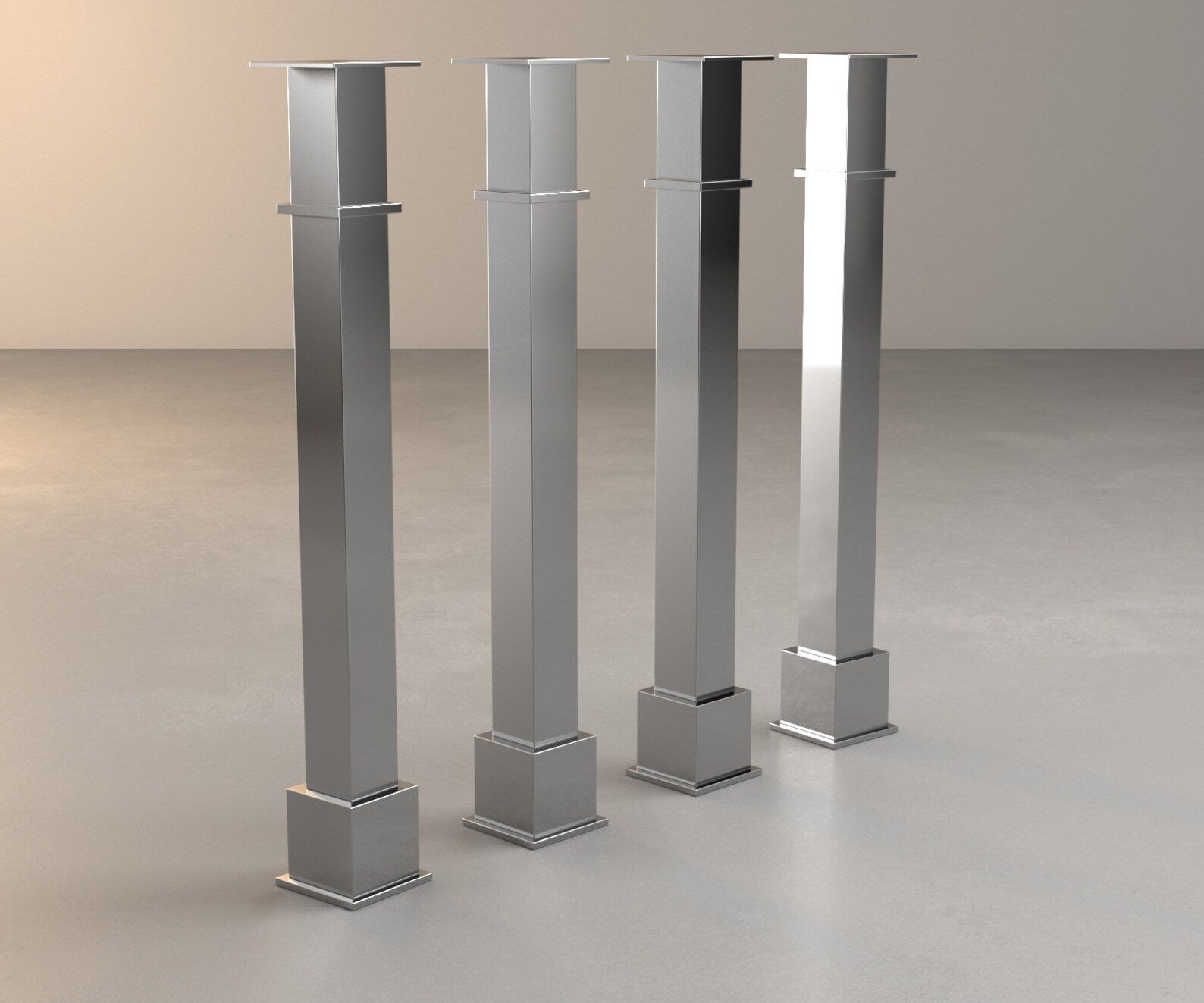A Guide to Selecting the Perfect Legs For Kitchen Area Island for Your Home
Choosing the ideal legs for your kitchen island is a nuanced decision that impacts both the performance and aesthetic charm of this central area. As you take into consideration these elements, it comes to be noticeable that the appropriate legs can change not just the appearance of your kitchen area however also its usability for years to come.

Understanding Cooking Area Island Legs
When choosing legs for a cooking area island, it's necessary to understand their useful and aesthetic roles in the general layout. The legs serve as a critical support system, making sure security and sturdiness for the island, which often works as a work space, dining area, or collecting place. Therefore, the option of product and building and construction technique need to be durable adequate to endure everyday usage and possible wear.
In enhancement to their architectural duties, legs contribute significantly to the island's visual charm. They can improve the kitchen area's design, whether via typical, modern, or diverse layouts. The elevation and percentage of the legs are also vital factors to consider; they have to balance with the island's kitchen counter elevation while making certain comfy seating for those making use of the room.
Moreover, the leg design can affect the total circulation of the cooking area. Open, ventilated leg designs can develop a feeling of lightness, while solid, substantial legs may share an extra based and steady aesthetic - Legs For Kitchen Island. Understanding these visual and practical elements will guide homeowners in making educated selections that match their kitchen's design and boost its functionality
Popular Styles and Materials
The option of legs for a kitchen island incorporates a variety of prominent designs and materials, each offering special characteristics that can improve both capability and appearances. Typical legs normally exhibit elaborate information and workmanship, enhancing traditional cooking area designs.

Height and Security Considerations

The legs of the kitchen island need to supply sufficient assistance, making certain that the framework can stand up to daily use without tottering or changing. Product selection plays a significant duty in stability; metal legs, for circumstances, tend to provide greater stamina compared to wood.
Matching Your Cooking Area Aesthetic
Choosing the best legs for your cooking area island goes beyond functionality; it also plays a substantial function in the general aesthetic of the area (Legs For Kitchen Island). When selecting legs, consider the design style of your kitchen.
Legs that match or contrast with your island's surface and surrounding cabinetry can develop visual harmony or striking focal points. Additionally, take into consideration the coating of the legs; matte, glossy, or textured surfaces can significantly influence the general feel of the kitchen area.
Installment and Maintenance Tips
Setting up kitchen area island legs needs careful focus to detail to make certain both stability and aesthetic allure. Begin by selecting an ideal area for your island, guaranteeing it click resources is level and has ample area for movement. Use a stud finder to situate wall surface studs if you are affixing the legs to a wall surface or using brackets for included assistance. Mark the placement of the legs properly prior to drilling.
When securing the legs, make use of top notch screws and, if required, timber adhesive for additional toughness. For metal legs, make sure that you are making use of suitable supports and tools to stop damage to your flooring. It is a good idea to look for levelness after installment, making adjustments as needed to prevent tottering.
Upkeep is just as important for longevity - Legs For Kitchen Island. Consistently check the legs for any kind of indicators of wear or loosening, particularly in high-traffic locations. Clean the legs with an appropriate cleaner, preventing unpleasant products find more that may damage the surface area. For wooden legs, take into consideration using a timber conditioner regularly to keep their coating. By adhering to these installation and upkeep tips, you can guarantee that your kitchen area island legs stay both practical and aesthetically attractive.
Final Thought
To conclude, selecting the ideal legs for a cooking area island demands cautious consideration of height, security, and visual compatibility. By choosing appropriate materials and styles that straighten with the general kitchen area design, functionality can be boosted while maintaining aesthetic appeal. Proper installment and continuous maintenance better add to the toughness and durability of the cooking area island. Eventually, thoughtful leg selection plays an essential duty in raising both the practicality and layout of the kitchen area room.
When picking legs for a kitchen area island, it's important to recognize their functional and visual duties in the overall layout. Open, airy leg styles can develop a sense of lightness, while strong, substantial legs may share a more grounded and secure visual. The legs of the kitchen island must provide appropriate assistance, guaranteeing that additional reading the framework can withstand daily use without shifting or wobbling.Setting up cooking area island legs calls for mindful focus to detail to guarantee both security and visual allure.In conclusion, selecting the proper legs for a cooking area island demands careful consideration of height, stability, and aesthetic compatibility.